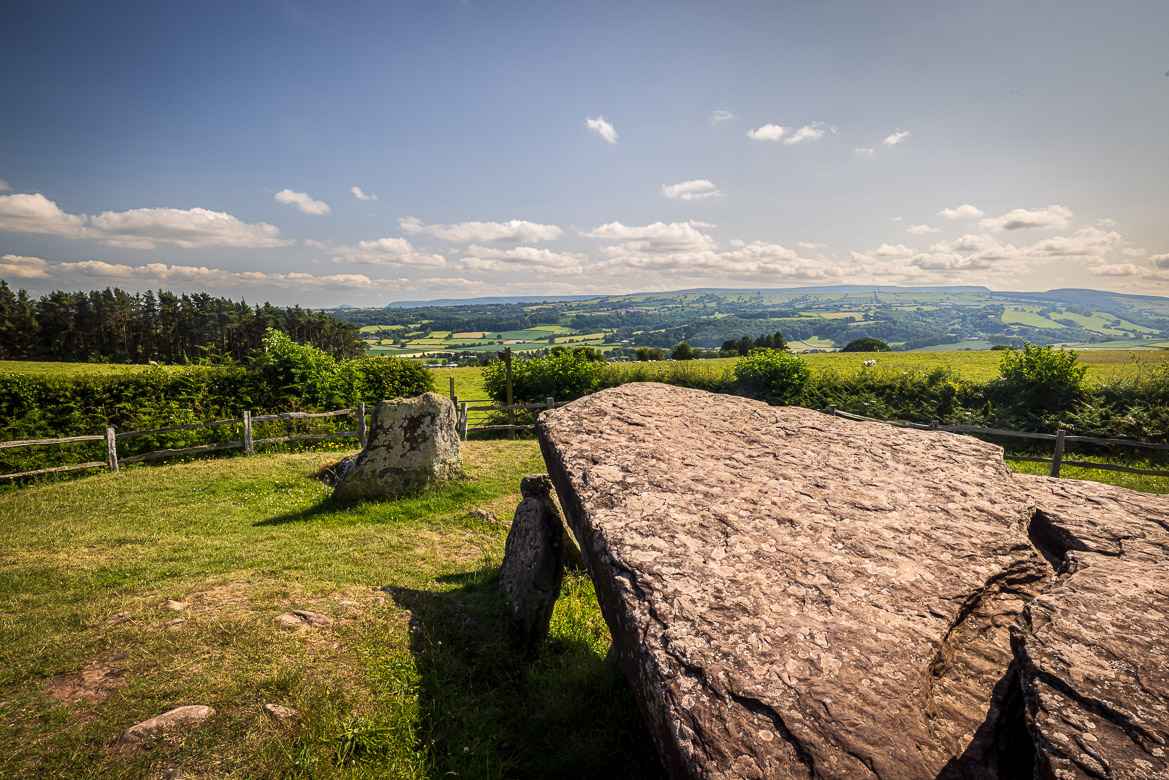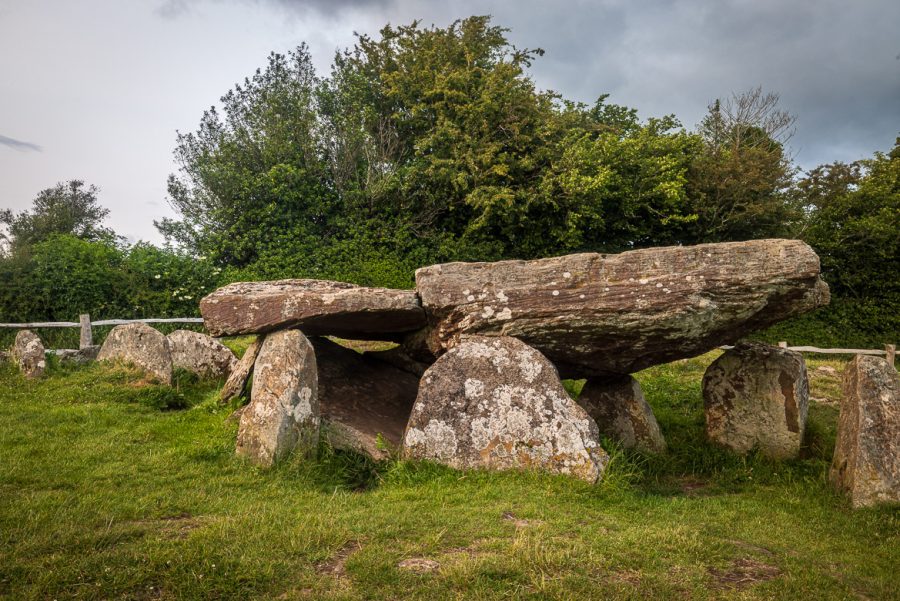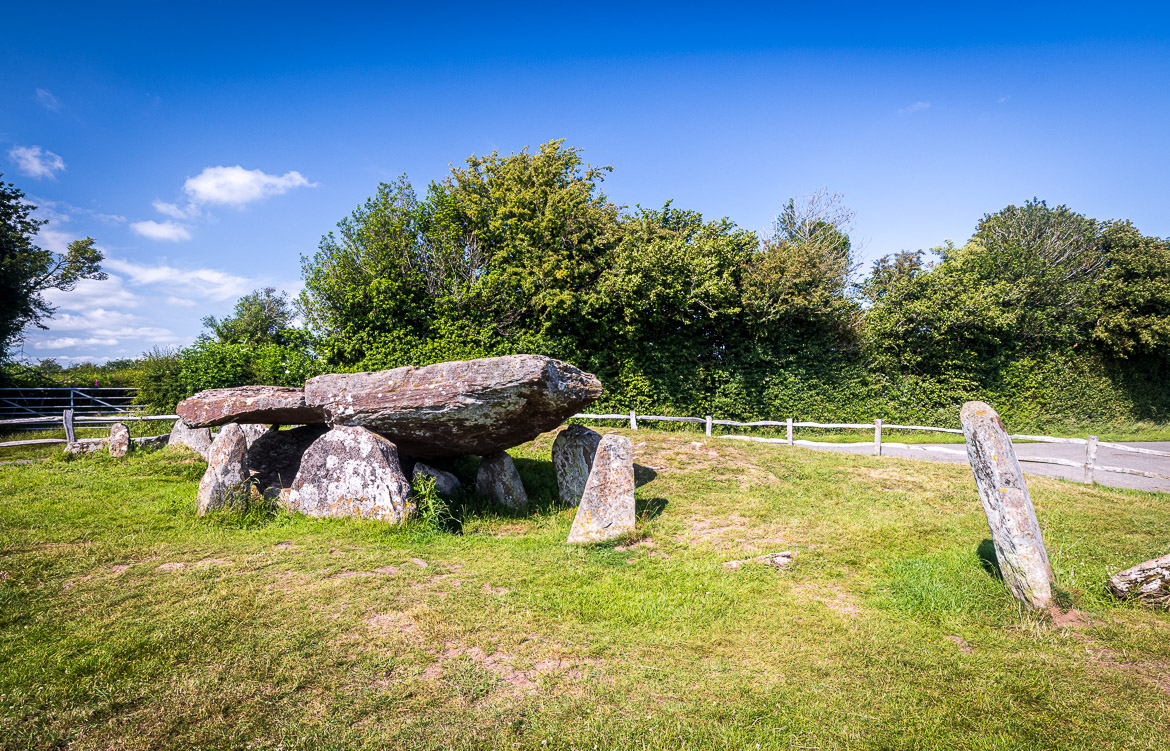
Arthur’s Stone is a burial tomb going back to Neolithic times (the New Stone Age) between 3,700 and 2,700 BC. It is situated in the Golden Valley in southwest Herefordshire. The Golden Valley is the valley where the river Dore runs through.
Dore or Dwr in Welsh means water, but when the Normans arrived, they thought that it was the French word d’Or, meaning Gold and therefore they named it the Golden Valley, and the name has stuck. Stone Age people had certainly an eye for the views, and the views over the Golden Valley from the tomb are to behold.
The capstone for the tomb is estimated to weigh 25 tonnes and you can see it on all three of my photos. The photos were taken at two very different times, once with a cloudy weather and once with sunshine and warmth.
Originally the stones would be covered by earth creating a burial mound that you could enter from one side. But as in many of the Neolithic tombs I photographed on Dartmoor the earth has been eroded and only the free standing stones remain.
Many prehistoric monuments have been linked to the legends of King Arthur, and this tomb is no exception. According to legend it was here that Arthur slew a giant, who left the impression of his elbows on one of the stones, when the giant fell.


